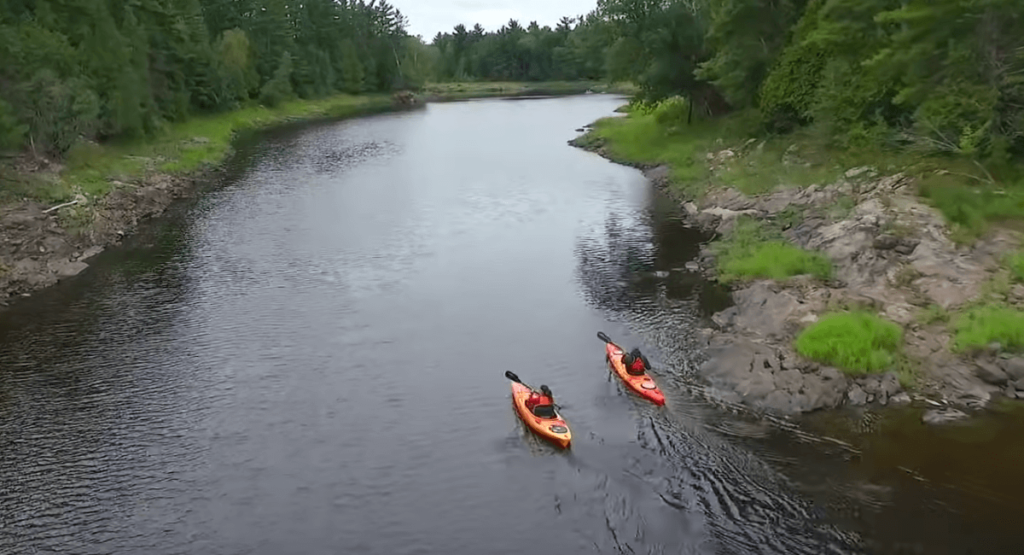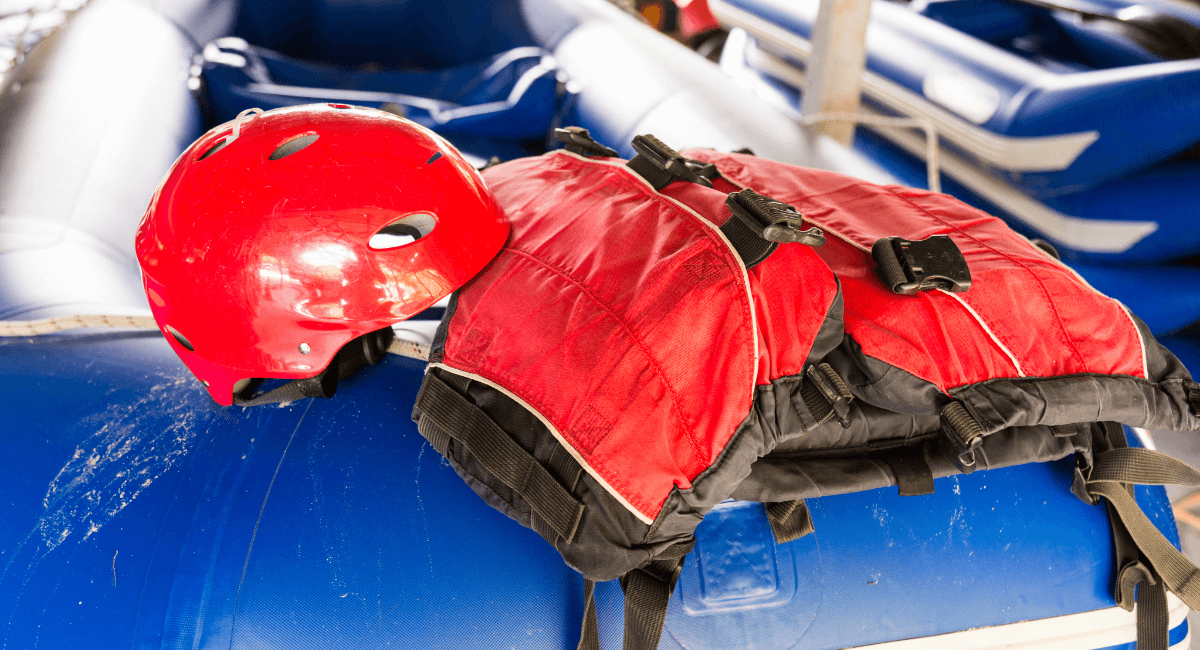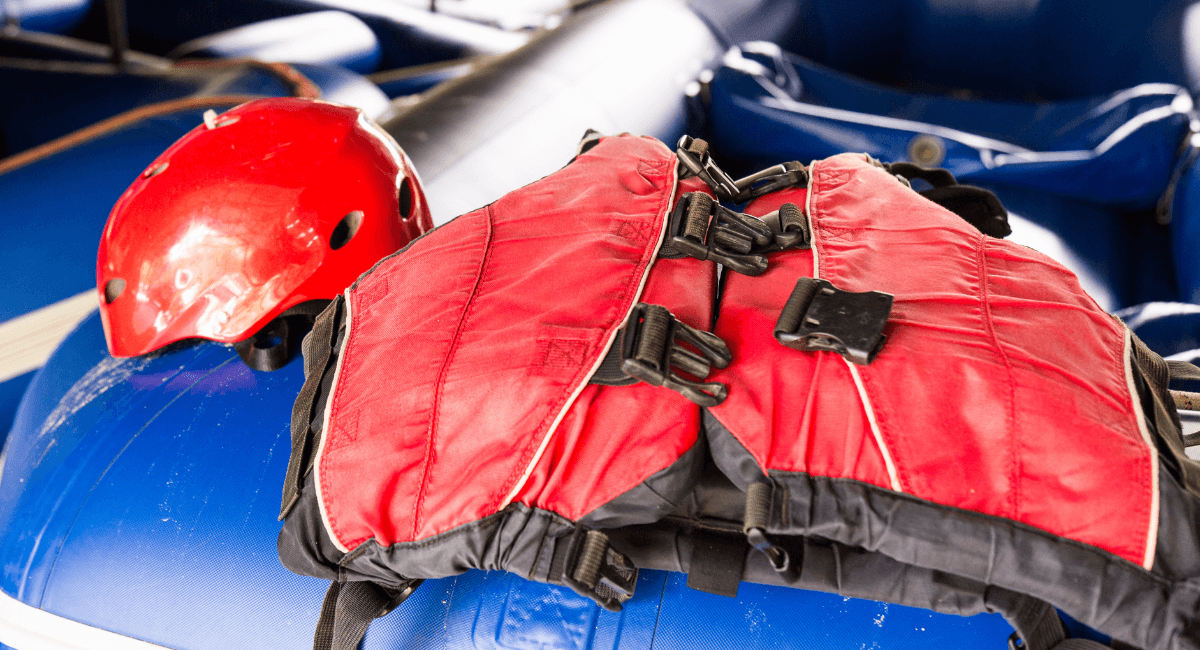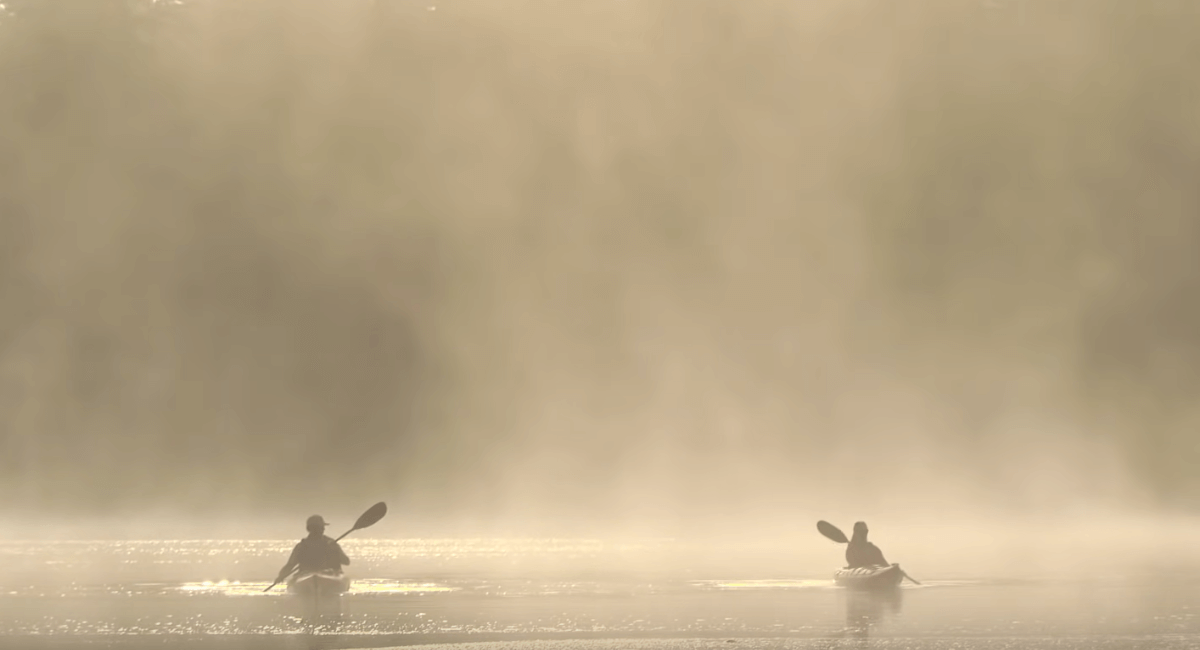The safest kayak is one with a stable hull and good tracking capabilities. These features ensure stability and control of the water, making it safe for paddlers of all skill levels.
When it comes to choosing a kayak, safety should be a top priority. Whether you’re a beginner or an experienced paddler, having a kayak with a stable hull and good tracking capabilities can make your time on the water not only enjoyable but also safe.
We will explore the essential features to look for in a safe kayak, as well as some top recommendations for the safest kayaks on the market. By the end, you’ll know to make an informed decision and enjoy your kayaking adventures with peace of mind.
Choosing The Safest Kayak
When it comes to choosing a kayak, safety should be the utmost priority. Whether you are a novice or an experienced paddler, selecting the safest kayak is essential for a worry-free and enjoyable water adventure. With a multitude of options available in the market, it can be overwhelming to determine which kayak offers the highest level of safety. In this segment, we’ll delve into the crucial elements to consider when choosing the safest kayak, ensuring that your paddling experience is both secure and enjoyable.
Considerations For Safety
Several factors contribute to the safety of a kayak, and being aware of these considerations can aid in making an informed decision. When assessing a kayak’s safety features, keep the following in mind:
- Stability: Opt for a kayak that offers excellent stability, especially if you are new to kayaking. Look for a wider hull to enhance stability on the water.
- Buoyancy: Choose a kayak with sufficient buoyancy to ensure that it stays afloat even in the event of capsizing or taking on water.
- Visibility: Consider kayaks with bright, highly visible colors to enhance your visibility to other watercraft.
- Self-draining: Look for self-draining kayaks that efficiently remove water to prevent swamping, enhancing overall safety.
Durability And Materials
Aside from safety features, the durability and materials of a kayak play a significant role in ensuring safety and longevity. Consider the following aspects when assessing a kayak’s durability:
- Material: Opt for kayaks made from durable materials such as polyethylene, fiberglass, or ABS plastic, which offer excellent resistance to impact and abrasion.
- Construction: Check for durable construction methods such as roto molding, which creates a seamless and robust kayak hull.
- Weight capacity: Ensure that the kayak’s weight capacity meets your needs, as overloading a kayak can compromise its stability and safety.
Types Of Kayaks For Safety

When it comes to choosing a kayak, safety should be a top priority. Different types of kayaks are designed with specific features that cater to various skill levels and water conditions. Let’s explore the types of kayaks that prioritize safety.
Recreational Kayaks
Recreational kayaks are perfect for beginners and casual paddlers. They typically have a wider and more stable hull, making them less likely to tip over. Additionally, recreational kayaks often have a large cockpit, making it easier to get in and out, and they provide excellent stability in calm waters such as lakes and slow-moving rivers.
Touring Kayaks
Touring kayaks are designed for longer trips and can handle a variety of water conditions, including rougher waters. These kayaks are known for their sleek design and efficient tracking. They provide better maneuverability and are often equipped with bulkheads to prevent sinking in case of a capsize, enhancing safety during longer journeys.
Sit-on-top Kayaks
Sit-on-top kayaks are popular for their forgiving nature, making them ideal for beginners and families. The open design allows for easy re-entry in case of a capsize, promoting safety and confidence on the water. Additionally, these kayaks are often equipped with self-bailing features, ensuring a safer and drier experience.
Safety Features To Look For

When selecting a kayak, safety features are crucial. Here are the key aspects to consider:
Buoyancy And Stability
- Ensure the kayak has high buoyancy and stability for safe water exploration.
- Look for a kayak with a wider hull for improved stability in rough waters.
- Check for multiple air chambers to prevent sinking in case of damage.
Self-rescue Features
- Opt for kayaks with self-rescue features like grab lines and paddle holders.
- Choose a kayak with a sit-on-top design for easy re-entry in case of capsizing.
- Consider kayaks with bailing systems to remove water efficiently.
Comfort And Ergonomics
- Look for features that enhance comfort and ergonomics during long paddling sessions.
- Invest in a kayak with padded seats and adjustable footrests for personalized comfort.
- Choose a kayak with ergonomic handles and deck rigging for easy transportation and gear storage.
Safety Accessories

When choosing the safest kayak, it’s important to invest in high-quality safety accessories such as life jackets, helmets, and rescue kits. These essential items provide added protection during kayaking adventures, ensuring a safe and enjoyable experience on the water.
Personal Flotation Devices (PFD)
When it comes to kayak safety, personal flotation devices (PFDs) are an absolute must-have. PFDs, also known as life jackets, are designed to keep you afloat in case of an accident or if you fall into the water. They provide buoyancy and support, allowing you to stay safe and remain above water until help arrives. PFDs come in various shapes and sizes, so it’s important to choose one that fits you properly and is comfortable to wear.
Look for PFDs that are approved by the United States Coast Guard (USCG) to ensure their reliability and effectiveness. These PFDs are specially designed to meet strict safety standards, providing you with the utmost protection on your kayaking adventures. Remember, safety should always be a priority. Always wear your PFD, regardless of your swimming ability or the calmness of the water. Accidents can happen when least expected, and having a PFD can save your life or that of a fellow kayaker.
Paddle Leashes
Another important safety accessory for kayaking is a paddle leash. As the name suggests, a paddle leash is a device that keeps your paddle securely attached to your kayak. It ensures that your paddle doesn’t get lost if you accidentally drop it or capsize.
Paddle leashes are usually made from durable materials such as nylon or bungee cord and typically feature a hook or loop on one end to attach to your paddle and a Velcro strap or clip on the other end to secure it to your kayak. By using a paddle leash, you can confidently focus on paddling without worrying about losing your paddle.
A paddle leash not only keeps your paddle within reach but also prevents it from becoming a hazard in strong currents or windy conditions. It adds an extra layer of safety to your kayaking experience, allowing you to navigate the waters with peace of mind.
Safety Whistles
In addition to PFDs and paddle leashes, it’s essential to have a safety whistle as part of your kayaking gear. A safety whistle is a small, lightweight device that emits a loud, piercing sound when blown. It is an effective way to grab attention and signal for help in case of an emergency. Safety whistles are typically made from durable materials such as plastic or metal, ensuring they can withstand exposure to water and harsh conditions.
They are designed to be easily accessible, often featuring a clip or lanyard that can be attached to your PFD or kayak. Whether you’re in a remote location, facing adverse weather conditions, or in need of assistance, a safety whistle can be a lifesaver. Its shrill sound can carry over long distances, attracting the attention of nearby boaters or rescue teams.
Always keep a safety whistle within reach to enhance your kayak safety measures. By investing in personal flotation devices (PFDs), paddle leashes, and safety whistles, you are equipping yourself with crucial safety accessories that can potentially save your life or that of your fellow kayakers. Stay prepared, stay safe, and enjoy your kayaking adventures with peace of mind.
Proper Safety Practices
The safest kayak is one that prioritizes proper safety practices. By following appropriate guidelines and using the necessary equipment, kayakers can ensure a safe and enjoyable experience on the water. Stay conscious of water conditions, wear a life jacket, and be knowledgeable about rescue techniques to make kayaking a secure recreational activity.
Wearing The Right Gear
Before you embark on a kayaking adventure, it is crucial to prioritize your safety by ensuring you have the right gear. Wearing the appropriate equipment not only enhances your safety but also provides peace of mind throughout your journey on the water.
The most essential piece of gear is a properly fitted and Coast Guard-approved personal flotation device (PFD). The PFD should be worn at all times while kayaking and adjusted snugly to your body for maximum effectiveness. Additionally, wearing a helmet can provide added protection, especially when navigating through rough or rocky waters.
It is also advisable to dress in layers, considering the weather conditions and water temperature. Opt for quick-drying clothing that provides sun protection, and don’t forget to wear water shoes or secure footwear to prevent slipping and ensure proper foot support. Remember, taking these precautions regarding gear can significantly reduce the risk of accidents and provide a safe and enjoyable kayaking experience.
Checking Weather Conditions
One of the most crucial safety practices to adhere to before setting off on your kayaking journey is to check the weather conditions. Weather can play a significant role in determining the safety of your trip, as it can affect water conditions and the overall stability of the kayak.
Start by checking the forecast for any potential storms, high winds, or changing weather patterns. It is particularly important to look for signs of inclement weather, such as dark clouds, strong gusts of wind, or sudden temperature drops. Additionally, pay attention to water conditions, including tides, currents, and wave intensity.
Understanding these factors will help you make an informed decision about whether it is safe to proceed with your kayaking plans or if it is necessary to postpone or alter your trip. Don’t forget, that monitoring the weather throughout your journey is equally important to ensure your safety remains a top priority.
Basic Paddling Techniques
While equipping yourself with the right gear and checking the weather conditions are essential elements of kayaking safety, mastering basic paddling techniques is equally important. By familiarizing yourself with these fundamental skills, you can navigate your kayak more efficiently and respond to unexpected situations on the water. Start by holding the paddle correctly, with your hands shoulder-width apart, and gripping it firmly.
Maintain good posture and position your body in the center of the kayak for stability. When paddling, use your torso muscles rather than relying solely on your arms to generate power, ensuring longer endurance and reduced fatigue. Keep your paddle close to the kayak’s hull to maintain balance and control. Lastly, practice turning and stopping techniques to maneuver your kayak effectively. Remember, practicing and honing these basic paddling techniques will enhance your overall kayaking experience, making it both safe and enjoyable.
Essential Kayaking Safety Gear.
Personal Flotation Device (PFD) | Crucial for providing buoyancy and safety in case of an emergency | | Helmet | Protects the head from potential collisions and impacts | | Quick-drying Clothing | Ensures comfort and helps maintain body temperature | | Water Shoes or Secure Footwear | Prevents slipping and provides stability |
Ordered List: Steps to Follow for Proper Safety Practices
1. Wear a properly fitted and Coast Guard-approved personal flotation device (PFD) at all times.
2. Adjust the PFD snugly to your body to ensure maximum effectiveness.
3. Consider wearing a helmet, especially in rough or rocky waters.
4. Dress in layers, taking into account weather conditions and water temperature.
5. Choose quick-drying clothing that provides sun protection.
6. Wear water shoes or secure footwear to prevent slipping.
7. Check weather conditions and forecasts before heading out.
8. Look for signs of inclement weather like dark clouds, strong winds, or temperature fluctuations.
9. Pay attention to water conditions, including tides, currents, and wave intensity.
10. Master basic paddling techniques, including proper hand placement, torso engagement, and kayak maneuvering.
11. Practice turning and stopping techniques to enhance your overall paddling skills. Remember, by following these proper safety practices, you can ensure a safer kayaking experience and fully enjoy your time exploring the serene beauty of the waterways.
Choosing The Right Kayak For Your Skill Level

Choosing the safest kayak that matches your skill level is crucial for a secure paddling experience. Ensure a safe adventure by selecting a kayak that suits your abilities and offers stability on the water.
Choosing the Right Kayak for Your Skill Level
Beginner
For newcomers, stability and easy maneuverability are crucial. Look for sit-on-top kayaks with a wider base for better balance.
Intermediate
Intermediate paddlers might prefer sit-in kayaks, offering more control and speed. Consider narrower designs for improved tracking capabilities.
Advanced
Experienced kayakers may opt for sea or whitewater kayaks, tailored for specific environments. Advanced models are lighter and offer enhanced performance. As a beginner, choose a stable sit-on-top kayak. Intermediate individuals may prefer sit-in kayaks for control. Advanced kayakers explore specialized sea or whitewater models.
Investing In Kayak Lessons
Investing in Kayak Lessons is an important decision for anyone considering taking up kayaking as a hobby or sport. Whether you’re a beginner or have some experience, proper training and guidance are essential for safety and enjoyment on the water.
Importance Of Training
Understanding the fundamentals of kayaking and safety protocol is crucial before embarking on any paddling expedition. Kayak lessons provide you with the knowledge and skills needed to navigate various water conditions, handle the kayak properly, and perform self-rescue techniques in case of emergencies.
Finding Certified Instructors
When seeking kayak lessons, it’s imperative to ensure that you learn from certified instructors or accredited kayak schools. These professionals possess the necessary expertise to teach you the proper techniques, safety measures, and best practices for kayaking. By engaging with certified instructors, you can have peace of mind knowing that you are receiving instruction from qualified individuals.
Frequently Asked Questions Of What Is The Safest Kayak
What Factors Should I Consider For Kayak Safety?
When choosing a kayak, consider stability, buoyancy, size, and material. Always wear a life jacket, follow safety guidelines, and check weather conditions before kayaking.
How To Ensure Safe Kayaking In Various Water Conditions?
Practice paddling techniques in calm waters before venturing into rough waters. Stay alert, avoid strong currents, wear appropriate gear, and know emergency procedures for different conditions.
Are There Specific Safety Tips For Solo Kayaking?
Solo kayaking requires extra caution. Inform someone about your trip details, carry necessary supplies like a first aid kit and signaling devices, stay close to shore, and avoid risky maneuvers to ensure a safe experience.
Conclusion
Ensuring safety on the water is paramount when choosing a kayak. By prioritizing stability, durability, and proper fit, you can select the safest kayak for your adventures. Remember to always check for safety features and invest in quality gear to enjoy your paddling experiences worry-free.
